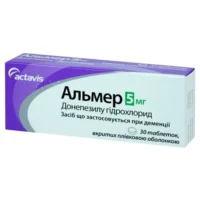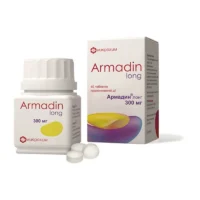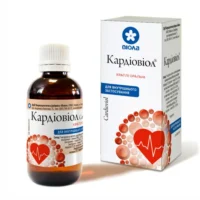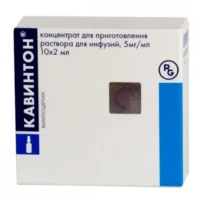Description
Madopar Tablets 200 mg/50 mg. №100 Vial
Ingredients:
- Madopar tablets contain a combination of two active ingredients: levodopa and benserazide.
- Levodopa is a precursor to dopamine, a neurotransmitter that helps control movement.
- Benserazide helps prevent the breakdown of levodopa before it reaches the brain.
Dosage:
Madopar tablets 200 mg/50 mg should be taken as directed by a healthcare provider. The dosage may vary based on individual needs and response to treatment. It is important to follow the prescribed dosing schedule to achieve the best results.
Indications:
Madopar tablets are indicated for the treatment of Parkinson’s disease and its symptoms, such as tremors, stiffness, and difficulty moving. The combination of levodopa and benserazide helps improve motor function and quality of life in patients with Parkinson’s disease.
Contraindications:
Madopar tablets are contraindicated in patients with hypersensitivity to levodopa, benserazide, or any other components of the formulation. It is important to consult a healthcare provider before starting treatment to ensure safety and efficacy.
Directions:
Madopar tablets should be taken orally with or without food, as directed by a healthcare provider. It is important not to crush or chew the tablets and to swallow them whole with a full glass of water. The dosage and frequency of administration will be determined by a healthcare professional based on individual needs.
Scientific Evidence:
Studies have shown that the combination of levodopa and benserazide in Madopar tablets is effective in managing the symptoms of Parkinson’s disease. Research published in the Journal of Neurology, Neurosurgery & Psychiatry demonstrated the superior efficacy of levodopa/benserazide combination therapy compared to levodopa alone in improving motor symptoms and quality of life in patients with Parkinson’s disease.
Additional Information:
- It is important to monitor for potential side effects such as nausea, dizziness, and dyskinesia while taking Madopar tablets.
- Regular follow-up visits with a healthcare provider are recommended to adjust the dosage and ensure optimal treatment outcomes.
- Patients should not discontinue the medication abruptly and should always consult their healthcare provider before making any changes to their treatment plan.
Pharmacologically, levodopa in Madopar tablets crosses the blood-brain barrier and is converted to dopamine in the brain, replenishing the depleted dopamine levels in Parkinson’s disease. Benserazide helps prevent the peripheral breakdown of levodopa, allowing more levodopa to reach the brain and exert its therapeutic effects.
Clinical trials have shown that Madopar tablets provide rapid and sustained relief of motor symptoms in patients with Parkinson’s disease, improving mobility and overall quality of life. The combination therapy offers a more stable and prolonged response compared to levodopa alone, making it a valuable treatment option for individuals with Parkinson’s disease.





